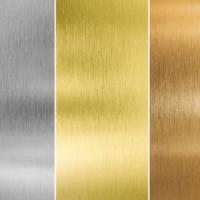 Add My Company
Add My Company
Sign In
Blog: Chemical Etching: How We Got Here
22-07-2015

Chemical etching is…
Photochemical etching is a manufacturing process during which sheet metal is etched, either on both sides, to carve out specific parts, or on one side, to mark metals with anything from precise grooves (a la circuit boards) to company logos. The process produces complex components with the utmost accuracy, and highest quality.
The template is printed onto photographic film which, in turn, coats the metal sheet. UV-sensitive photoresist ensures that only the pre-defined areas are etched when the plates pass through the chemical baths, leaving a stress and burr-free result, etched exactly to brief.
Wikipedia sums the process up as:
“a chemical milling process used to fabricate sheet metal components using a photoresist and etchants to corrosively machine away selected areas”
Photo etching is a popular choice for fabricating small parts like gaskets and flat springs, wire meshes, filters, and components for electronics, as well as things like giftware, jewellery and much more.
What came before?
Metals and various forms of metalwork were well-established industries, essential to our way of life, long before photo etching took the world by storm. In fact, much of civilisation’s success is down to ancient societies’ use of metals, tens of thousands of years ago.
Here’s a whistle stop tour of post-Mesolithic metallic history:
6000 BC – Gold
Gold was used for jewellery back in the Stone Age, and has continued to fascinate the world, both chemically and commercially, ever since.
4200 BC – Copper
Copper revolutionised trade and people’s ability to build societies because it replaced the use of stone in tools and weapons.
4000 BC – Silver
Silver is one of the world’s most popular metals, and has been for quite some time. In addition to its use for ornamental purposes, it also played a pivotal role as currency in history’s greatest empires.
2300 BC – Bronze
The Bronze Age is one of the best-known, lasting from 2300 BC to 700 BC. Metallurgists experimented by mixing elements and they found that combined metals were stronger than individuals were.
1500 BC – Iron
As one of the most versatile metals in the world, iron has long been used for everything from construction to weaponry. It defined an age (Iron Age) and revolutionised how wars were won, cities were built and life was lived.
1751 AD – Nickel
Supposedly the second most abundant element on Earth, nickel is popular and very useful metal. For the creation of corrosion-resistant alloys, it is particularly useful.
1791 AD – Titanium
An 18th century discovery, this exceptional element was not widely used until the mid-twentieth century. Today it is used for all manner of purposes, thanks to its durability and versatility.
1797 AD – Chromium
A superb metal used in steel alloys, this corrosion-resistant metal is a key part of the stainless steel manufacturing process.
1827 AD – Aluminium
Weighing two thirds less than steel, and the most common element in the Earth’s crust, aluminium is one of the lightest and most useful metals out there. It is suitable for drinks cans, engineering works, and plenty more.
(For more, see here)
The 20th century saw yet more advancement in metalwork and other related discoveries. Technological developments, an increase in demand for metal, and a change in the way people thought about using and working with metal led to such innovations as those employed here at www.qualitetch.co.uk.
How did we get from there to here?
Well, it was a big step from the first discovery of gold and the shift from stone to copper tools, to where we are today. We have seen advancements of both a technological and engineering nature, and 21st century life incorporates far more metal and innovation than ancient civilisations, and even mid-twentieth century society.
Relatively primitive practices and alchemy gave way to metallurgy and chemistry, which went on to help engineering and design developments. As such, we now have endless options when it comes to manufacturing and metalwork, with ongoing evolution.
Photochemical etching is just one such advancement; one that proves increasingly popular thanks to its innovation, precision, and versatility. Like anything worthwhile though, photo etching didn’t happen overnight. It took time, effort, experimentation and discovery.
But one thing is for sure; regardless of where photo etching came from, and where it is now…it is going places!
For more information on Blog: Chemical Etching: How We Got Here talk to Qualitetch Components Ltd
Enquire Now
List your company on FindTheNeedle.

